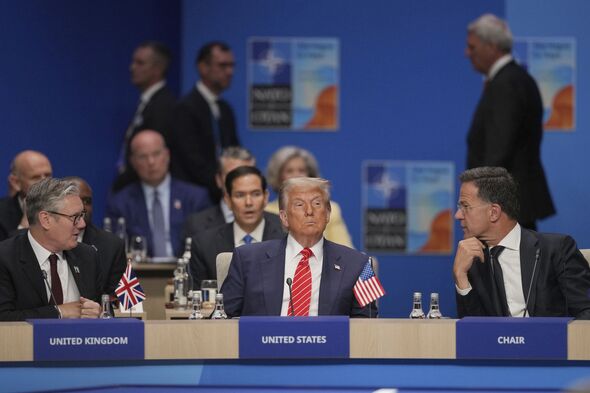World
NATO Allies Set to Meet Defence Spending Target After Years of Pressure

All 32 members of NATO are on track to meet the alliance’s defence spending target of 2% of gross domestic product (GDP) in 2025. This achievement comes eleven years after the target was first established and follows significant pressure from the administration of former US President Donald Trump to increase military expenditure. The alliance is now setting its sights on a higher goal, aiming for a 5% target by 2035.
New estimates from NATO indicate that the eight lowest spenders—namely Croatia, Portugal, Italy, Canada, Belgium, Luxembourg, Slovenia, and Spain—are projected to hit the 2% benchmark by 2024. The United Kingdom, consistently one of the alliance’s higher spenders, is expected to allocate 2.4% of its GDP to defence in 2025, an increase from 2.33% in 2024.
The Baltic nations, seen as particularly vulnerable to potential threats from Russia, are currently the highest spenders as a percentage of GDP. Poland leads the way at 4.48%, followed by Lithuania at 4%, Latvia at 3.73%, and Estonia at 3.38%. Notably, Poland, Lithuania, and Latvia are the only nations meeting the new NATO benchmark.
While the United States remains the largest contributor in monetary terms, it ranks sixth in spending as a share of GDP at 3.22%. The UK is positioned 12th, behind nations such as Greece, Finland, Sweden, and the Netherlands.
Progress Over the Years
In a statement, NATO highlighted the progress made since 2014, when only three allies met the 2% target. “In 2025, all allies are expected to meet or exceed the pre-summit target of investing at least 2% of GDP in defence. Over the past decade, European allies and Canada have gradually increased their combined defence investment from 1.43% of their GDP in 2014 to an anticipated 2.02% in 2024,” the statement read. This increase reflects a collective investment exceeding USD 485 billion (adjusted to 2021 prices) in defence.
The 2% target was initially introduced as a guideline in 2006 and was formally adopted in 2014 after Russia’s illegal annexation of Crimea prompted renewed focus on defence capabilities within the alliance. Earlier this year, NATO members agreed to a new benchmark following calls from President Trump and Secretary General Mark Rutte, who warned of potential threats from Russia within the next five years.
Future Commitments
In June 2023, NATO allies committed to a 5% of GDP goal by 2035, with a breakdown of 3.5% designated for “core defence” and 1.5% for defence-related areas, such as infrastructure and cybersecurity. President Trump previously emphasized the importance of allies contributing adequately to their own defence, arguing that it was “common sense” for nations to invest in their military capabilities.
As NATO members work toward these ambitious targets, the alliance continues to navigate complex geopolitical landscapes, ensuring the security and readiness of its forces as global tensions evolve.
-

 Health3 months ago
Health3 months agoNeurologist Warns Excessive Use of Supplements Can Harm Brain
-

 Health3 months ago
Health3 months agoFiona Phillips’ Husband Shares Heartfelt Update on Her Alzheimer’s Journey
-

 Science2 months ago
Science2 months agoBrian Cox Addresses Claims of Alien Probe in 3I/ATLAS Discovery
-

 Science2 months ago
Science2 months agoNASA Investigates Unusual Comet 3I/ATLAS; New Findings Emerge
-

 Science1 month ago
Science1 month agoScientists Examine 3I/ATLAS: Alien Artifact or Cosmic Oddity?
-

 Entertainment5 months ago
Entertainment5 months agoKerry Katona Discusses Future Baby Plans and Brian McFadden’s Wedding
-

 Science1 month ago
Science1 month agoNASA Investigates Speedy Object 3I/ATLAS, Sparking Speculation
-

 Entertainment4 months ago
Entertainment4 months agoEmmerdale Faces Tension as Dylan and April’s Lives Hang in the Balance
-

 World3 months ago
World3 months agoCole Palmer’s Cryptic Message to Kobbie Mainoo Following Loan Talks
-

 Science1 month ago
Science1 month agoNASA Scientists Explore Origins of 3I/ATLAS, a Fast-Moving Visitor
-

 Entertainment2 months ago
Entertainment2 months agoLewis Cope Addresses Accusations of Dance Training Advantage
-

 Entertainment4 months ago
Entertainment4 months agoMajor Cast Changes at Coronation Street: Exits and Returns in 2025









